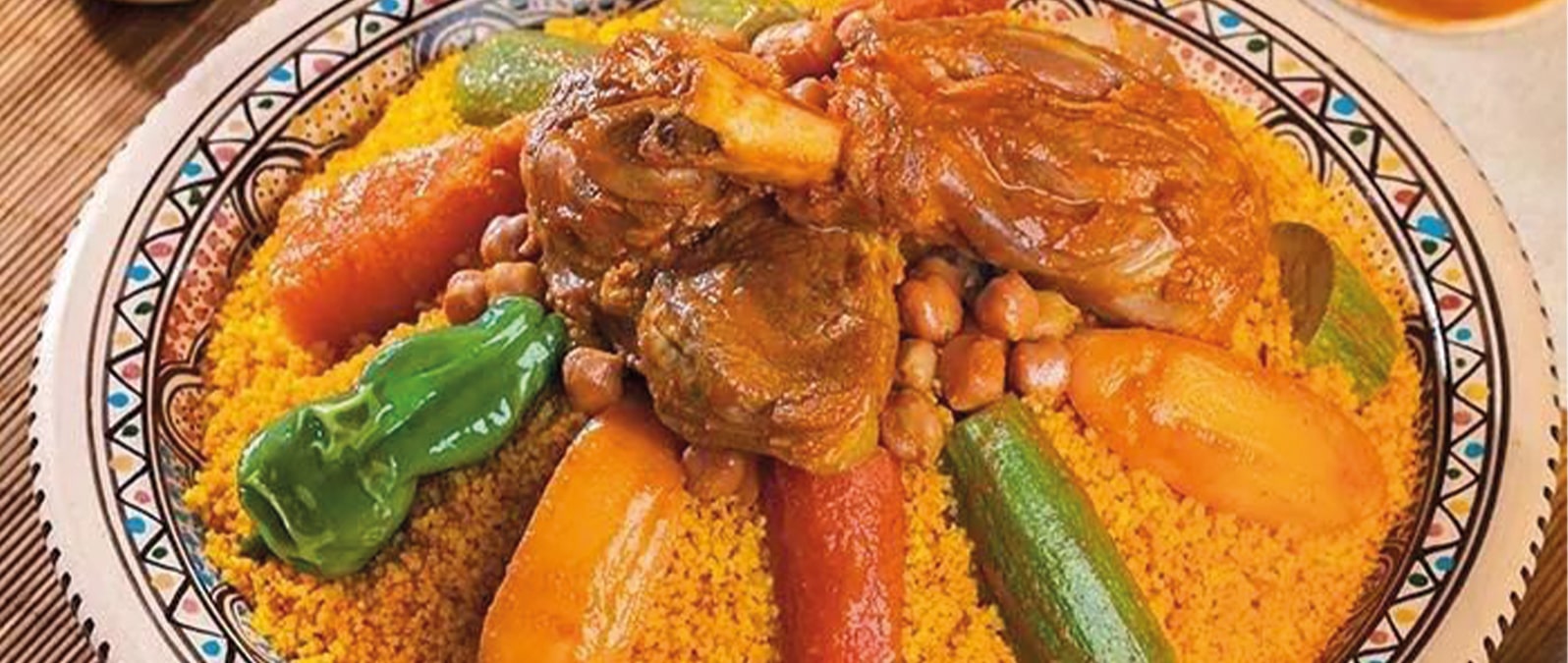
Kouskous is a dish made primarily from semolina wheat granules that are steamed until fluffy and tender. These tiny steamed granules are typically served with a rich stew of meat and vegetables, soaked in flavorful broth.
In Tunisia, kouskous is often considered the national dish, cherished for its comforting taste and social significance.
The origins of couscous date back centuries and are believed to have begun with the Berbers of North Africa. Over time, it spread throughout the Maghreb and adapted into various regional styles.
In Tunisia, kouskous has been at the center of social gatherings, religious holidays, weddings, and family feasts. It’s a dish that brings people together, often served in large communal plates encouraging sharing and conviviality.
Tunisian kouskous stands out for its bold and often spicy flavors. Common ingredients include:
Semolina couscous grains — steamed traditionally in a special pot called a kiskas.
Meats: Lamb is most common, but beef, chicken, or fish may also be used depending on the region and occasion.
Vegetables: Carrots, zucchini, pumpkin, turnips, chickpeas, potatoes, and tomatoes.
Harissa: A spicy chili paste, essential to Tunisian cuisine, often added to the stew for heat.
Spices: Cumin, coriander, turmeric, cinnamon, and sometimes saffron or dried rose petals for a fragrant touch.
Broth: A rich tomato-based broth that infuses the couscous with flavor.
Traditionally, couscous grains are sprinkled with water and rolled by hand to form small granules. These are then steamed in a kiskas, a two-part pot with holes in the upper section, allowing steam to rise and cook the couscous gently until fluffy.
Meat is browned and slow-cooked with spices and vegetables in a large pot. Chickpeas are added for texture and nutrition. The broth is thickened and seasoned with harissa to give it the characteristic Tunisian kick.
The couscous is piled high on a large communal plate. The stew is ladled over the couscous, and sometimes the broth is served on the side. Fresh herbs like parsley or coriander may be sprinkled on top for freshness.
Kouskous with Fish: Common in coastal regions, uses white fish and sometimes shellfish.
Kouskous with Merguez: Includes spicy lamb sausages, a beloved street-food variation.
Vegetarian Kouskous: Uses a vegetable-only stew with chickpeas and seasonal vegetables.
Sweet Kouskous: A rare dessert variation with sugar, raisins, and cinnamon.
A Taste Explosion: The combination of spices, harissa, and fresh ingredients offers an unforgettable taste experience.
Healthy and Nutritious: Packed with protein, fiber, and vitamins from meat and vegetables.
Cultural Connection: Eating kouskous is like taking part in a centuries-old tradition of Tunisian hospitality.
Perfect for Sharing: Its communal serving style brings friends and family closer.
If you visit Tunisia, be sure to try kouskous in:
Tunis: The capital city boasts some of the finest traditional kouskous restaurants.
Sfax: Known for a heartier, spicier style of kouskous.
Sousse and Hammamet: Popular tourist destinations with many local eateries serving classic couscous dishes.
While it requires patience, making kouskous at home is rewarding. Use good quality semolina, fresh spices, and if possible, authentic harissa. Many online stores offer Tunisian harissa and spice blends to help replicate the flavors.
Tunisian kouskous is much more than food — it’s a cultural emblem that tells the story of Tunisia’s history, geography, and spirit of community. Whether you enjoy it in a bustling Tunisian market or prepare it yourself at home, kouskous invites you to savor the warmth and richness of Tunisia’s culinary heritage.